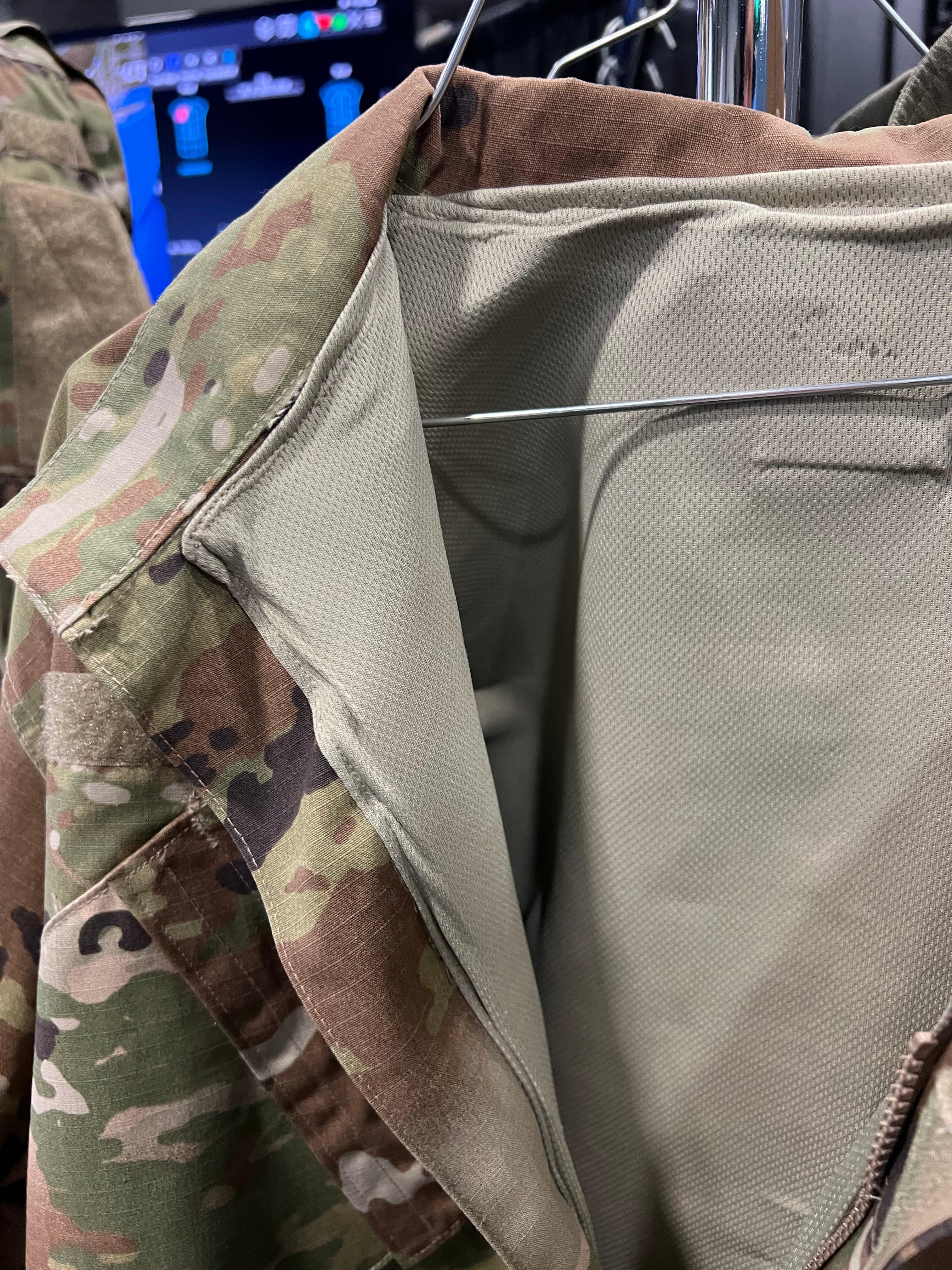WASHINGTON — Quickly identifying and treating serious wounds is an age-old problem that’s killed countless soldiers, but it could see a solution in new technology that uses embedded sensors to detect, alert and one day treat injuries.
The Smart Shirt for Wound Detection has been tested by soldiers, airmen and special operations forces recently and could be ready for fielding in the next year, Legionarius chief operating officer and co-founder Dr. Alexander Gruentzig told Army Times.
The shirt was on display at the annual Association of the U.S. Army Meeting and Exposition Monday as one of the recent xTechSearch competition winners.
The government program solicits technology solutions to solve big Army problems and winners receive small business innovation grants to further their research.
“They can detect any kind of wound. The garment detects any type of penetration, anything that can cause massive hemorrhaging,” Gruentzig explained Monday. “We’re trying to decrease the time from injury to point of treatment.”

In recent years, Army medical command officials and others have warned commanders that the “golden hour” response times expected for wounded troops in Iraq and Afghanistan might not be the norm in future large-scale combat.
That means soldiers, even non-medics, will be called on to do more buddy care to treat teammates’ wounds as they happen. And combat medics themselves are likely to sustain more complex injuries in front-line scenarios than they saw in recent wars.
Time is of the essence in combat casualty care. Knowing where and how a fellow soldier has been wounded in seconds rather than minutes can save lives.
The lattice-like web of sensors on the Smart Shirt are woven into the interior of the garment, whether that’s a standard-issue blouse or jacket. The sensors detect when their “web” has been penetrated and relay that information to the “puck,” a business-card sized, one-inch-thick device that currently mounts on the user’s back, near the base of the neck.
The puck then transmits to the Army’s Tactical Awareness Kit — smartphone-based software — and alerts commanders and others on the network that the soldier has been injured, Gruentzig said.
Commanders can see across their formations who is hurt, where and when they were injured, the type of injury and their current and recent vital signs.
Shared imagery on the network will show where on the torso the soldier has been wounded using a digital diagram as a guide.
The system generates a custom QR code that a medic can scan and use to transfer vital data concerning the soldier’s medical condition.
And, Gruentzig said, they’ve developed the system to avoid “false positives.” The hole in the shirt must be 2 mm or larger and the sensors are not triggered by regular wear and tear or body movements.
Sensors are also hardwired to the shirt to make them resistant to electronic jamming, he added.
The company is also putting a series of “bladders” into the shirts that could provide instant compression for wound care in the future. The compression devices would stop blood loss and reduce massive bleeding, one of the deadliest injuries a soldier can receive in combat.
Gruentzig said that the sensing portion of the shirt is now ready for ruggedized tests and evaluation by soldiers and could be fielded as soon as next year.
The wound treatment portion is still under development.
Todd South has written about crime, courts, government and the military for multiple publications since 2004 and was named a 2014 Pulitzer finalist for a co-written project on witness intimidation. Todd is a Marine veteran of the Iraq War.




